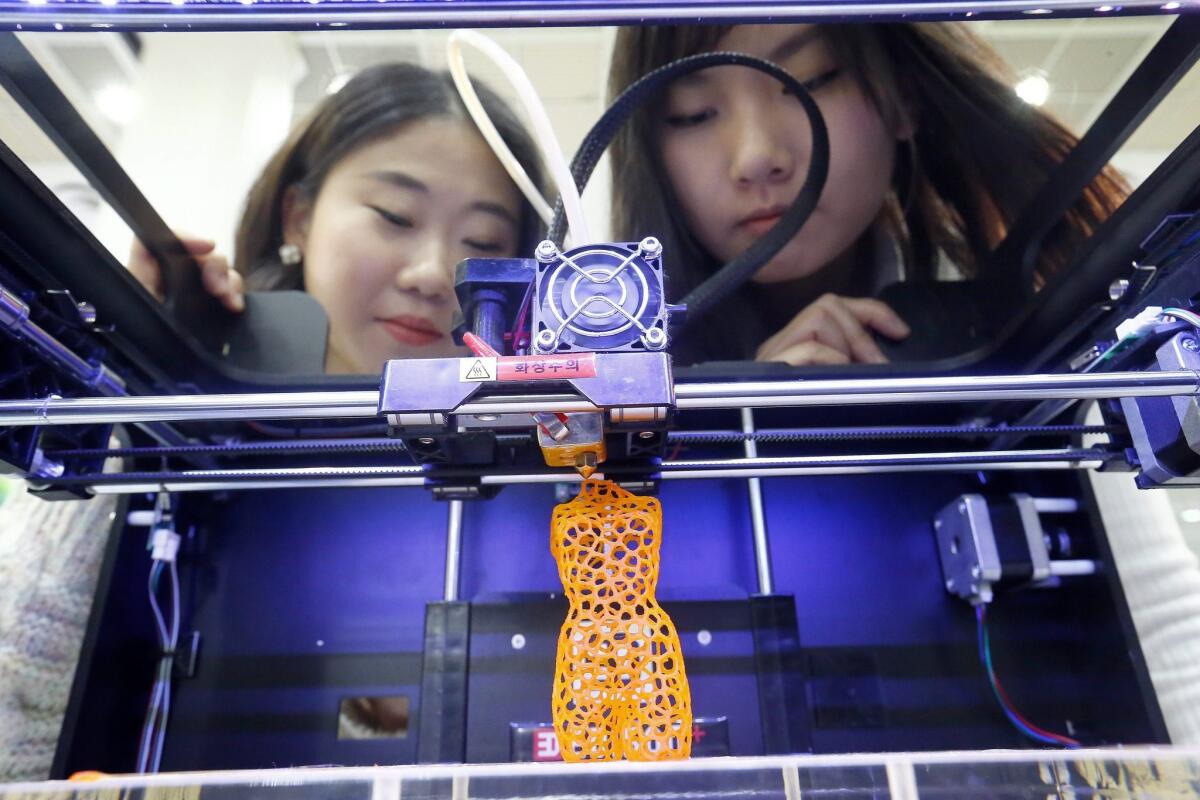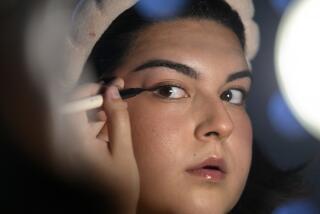3-D printers set to build on interest

- Share via
At the beginning of the year, I took an angst-ridden test drive of a Solidoodle 3-D printer. Since that clunky ride, the aptly termed “disruptive technology” has extruded a slew of firsts: bionic organs, electronics, stem cells, plastic and metal guns, bonbons, prosthetics (including eyeballs) and two Lady Gaga dresses.
The new rule: Imagine and design anything, then extrude it through fevered nozzles that layer material into three-dimensional shapes.
Those who believe the hype are betting that all savvy consumers will own 3-D printers within 10 years. Here are trends that may turn that prediction into reality:
Plug-and-play design. 3D Systems’ $1,300 Cube is billed as the first “home-certified” 3-D printer on the market. With a kid-centric design, it resembles an urbane Play-Doh machine. Expect similar family-friendly models, higher print resolution and speed, lower prices and full-spectrum color as crucial design patents expire.
App world. Software and apps will largely create and drive the desire for printers. Gesture-based 3-D modeling (like molding clay on screens) is gaining traction. Look for smartphone scanner apps that translate images to 3-D objects within the year.
Complementary products. Attendant technology will spur the perceived need to possess a 3-D printer. Already, hand-held $400 scanners enable printing of full-body selfies that make generic wedding cake toppers look like 99 Cents Only Store grabs. MakerBot’s futuristic Digitizer ($950) scans smaller objects for print replication. The $100 3Doodler pen allows users to scribble objects in the air.
Marketing rush. Increasingly, major brands will push interactive 3-D tie-ins to products. Why merely view a film? Marketers bet you’ll want to print out the props. Microsoft and Warner Bros. UK recently partnered, offering J.R.R. Tolkien fans 3-D printable blueprints for the mystical Key to Erebor, featured in the “Hobbit” movies. McDonald’s, make your move.
Customization. New apps, such as 3Dme, enable your image to be slapped on “must have” figurines: “Star Trek,” NBA and genres that range from holiday to horror. Brands will also strive to involve consumers as co-creators, enabling them to easily tweak and personalize shoes, jewelry, toys, eyeglasses -- you name it.
New materials. Currently it’s a plastic world for 3-D consumer buffs. Machines that extrude ceramic and various metals will add sophistication to the market in 2014 and beyond. Food printers, such as the $1,400 Foodini, will likely remain a novelty.
Kids. Face it, once you buy a 3-D printer, you’re not going to spend your days spitting out personalized napkin rings. But your kids will eagerly design and churn out action figures and smartphone covers. Tech-savvy kids may be the ink that spreads a 3-D printer craze.
4-D printing. This year the U.S. Army funded research for 4-D printable chameleon-like materials that adapt their “shape, properties or functionality” based on environments. Have at it, Lady Gaga.
Then again, the home 3-D printer may not take off. On-demand, cloud-based and streaming printing services could proliferate. Upload your designs or choose existing ones to be printed and delivered -- because hauling out your 3-D printer just might seem, well, so 2015.






